Repiping a house typically costs between $4,000 and $15,000 with an average around $7,500. When calculated per linear foot, expect roughly $2 to $10 per foot of piping. The total cost depends on your home’s size, plumbing layout, accessibility, and the material chosen for the new pipes.
Repiping means replacing your home’s entire water supply system—the network of pipes that carries clean water to every faucet, shower, and appliance. The process involves opening walls, replacing lines, and restoring finishes. Labor often reaches 50%+ of total cost. Larger homes or those with difficult pipe access (such as slab foundations or multi-story layouts) will fall on the higher end of the range.
Choosing the right pipe material is one of the biggest cost drivers. PEX piping is the most affordable and flexible option, while copper offers greater longevity and durability at a higher price point. Homeowners often combine both materials—PEX for interior distribution lines and copper for main connections—to balance performance and budget.
By understanding these variables, you can accurately estimate what a full home repipe will cost and plan for a long-term plumbing upgrade that improves both efficiency and reliability.
What Does Repiping a House Mean?
Repiping replaces your home’s entire water supply piping with new material to restore pressure and stop leaks. It focuses on the clean water distribution system, not the drains or sewer lines.
A full repipe typically includes:
- Manifolds and main lines, which direct water from the meter or well into the home.
- Shut-off valves, allowing isolation of specific fixtures or zones.
- Hot and cold supply lines, running through walls, ceilings, and crawl spaces.
- Connection fittings and adapters, ensuring leak-free transitions between new and existing components.
Drains, sewer lines, and fixtures such as sinks or toilets are not part of the repipe, although they may be temporarily removed for access.
The most common materials used in modern repiping are PEX, copper, and CPVC, chosen for their reliability and corrosion resistance. A professional plumber begins by assessing the current plumbing layout, identifying deteriorated sections, and mapping out efficient pipe routes for replacement.
Ultimately, repiping renews your home’s internal water infrastructure—reducing mineral buildup, stabilizing pressure, and ensuring safe, clean water delivery throughout the property.
What’s the Average Cost of Repiping a House?
Most whole-home repipes cost $4,000 to $15,000 with an average around $7,500. Price depends on material, home size, and access.
Repiping prices tend to stay near the national average because of the region’s moderate labor rates and widespread use of PEX piping. Smaller single-story homes with simple layouts may cost closer to $4,000, while large two-story or slab-foundation homes can exceed $12,000 due to extra wall or floor access work.
Material choice remains the single biggest cost variable. Copper is the most durable but labor-intensive material, while PEX offers flexibility and lower installation time. CPVC sits in the middle—more rigid than PEX but less costly than copper.
| Material | Avg. Cost per Linear Foot | Lifespan | Notes |
| PEX | $1.50–$4 | 40–50 years | Flexible, affordable, easy to install |
| Copper | $3–$8 | 50–70 years | Durable, resists corrosion, higher labor cost |
| CPVC | $2–$5 | 40–60 years | Moderate cost, rigid, can become brittle over time |
Copper repiping costs more due to both material expense and installation complexity, especially when working in finished walls or tight spaces. PEX, however, allows faster installation with fewer fittings, helping homeowners save on labor.
What Factors Affect the Cost of Repiping?
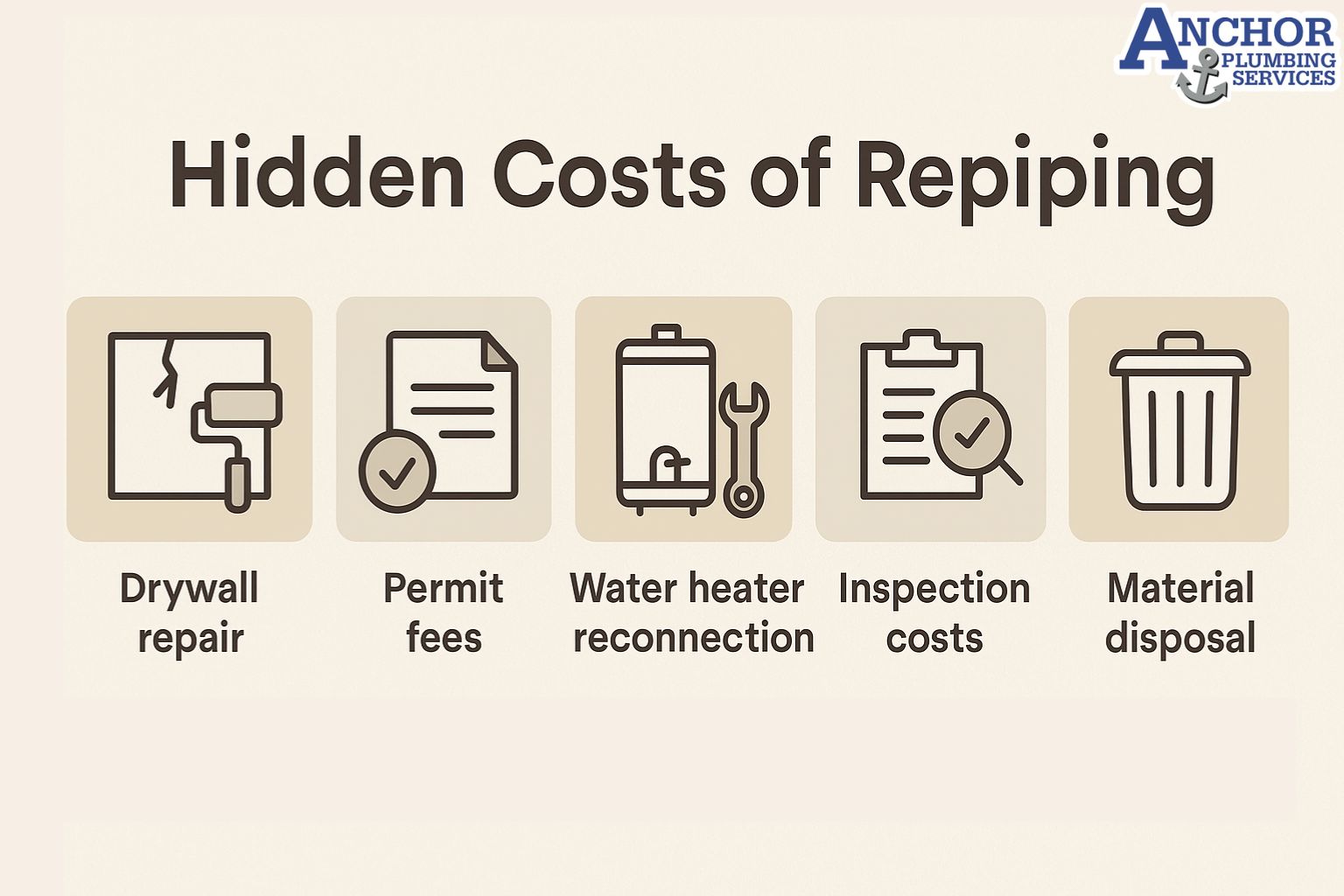
The cost of repiping varies based on several measurable factors that plumbers assess during inspection. These factors influence both material and labor costs.
Key cost drivers include:
- Pipe material – PEX is the most cost-effective; copper increases both material and labor costs.
- Home size and layout – Larger homes or multi-story layouts require more pipe and longer installation time.
- Accessibility – Pipes behind finished walls, ceilings, or under slabs take more time and effort to replace.
- Fixture count – Every additional sink, shower, or appliance adds to material and connection costs.
- Local labor rates – Rates vary by region; licensed plumbers in major cities may charge more per hour.
- Permits and inspections – Most municipalities require a plumbing permit and inspection.
Technicians assess the home’s layout, story count, and access walls to create an accurate estimate. Understanding these variables helps homeowners budget realistically and compare quotes fairly.
How Much Does It Cost to Repipe Different Types of Homes?
Single-story homes cost less to repipe because plumbing lines are easier to access through walls and crawlspaces. On average, these projects range from $4,000 to $8,000, depending on the total number of fixtures.
Two-story homes require additional pipe runs through floors and ceilings, increasing both labor time and materials. Costs for these projects typically range from $7,000 to $15,000 depending on the number of bathrooms and the home’s age.
Homes with slab foundations present higher costs because pipes are buried beneath concrete, requiring more invasive work or rerouting lines overhead. This can raise total costs by 20–30%.
Historic homes may also be more expensive to repipe due to tight crawlspaces, outdated materials, or fragile structures that demand careful handling.
| Home Type | Typical Cost Range | Access Difficulty | Notes |
| Single-story (crawlspace) | $4,000–$8,000 | Easy | Direct pipe access, minimal restoration |
| Two-story home | $7,000–$15,000 | Moderate | More fixtures and vertical pipe runs |
| Slab foundation | $8,000–$16,000 | High | Requires rerouting or jackhammering |
| Historic property | $10,000+ | High | Extra care and specialized restoration |
Slab foundations increase cost due to limited access and concrete removal, while crawlspaces offer easier entry and lower labor time. Understanding your home type helps estimate realistic pricing and timeline expectations.
Are There Additional Costs Homeowners Should Expect?
Some additional costs may include drywall repair, plumbing permits, inspection fees, and water heater flex connection that follow the main repiping project. These charges depend on local code requirements and the complexity of your plumbing layout.
City permits and drywall restoration can add to the final bill. Most municipalities require a plumbing permit, which typically costs $75–$300 depending on your location. Once the repiping work is complete, you’ll also need a city inspection to confirm the installation meets code standards—this fee is often bundled into your plumber’s estimate.
After pipes are replaced, sections of drywall must be repaired and repainted where walls were opened to access plumbing lines. Drywall restoration usually adds $400–$1,000 to the total cost, depending on how many walls or ceilings were affected.
Other variable costs include:
- Water heater reconnections, which may cost $150–$300.
- Fixture replacements, if outdated faucets or valves are incompatible with new piping.
- Old material disposal, usually a small charge (around $50–$100) for copper or galvanized pipe removal.
Although these costs vary, professional plumbers clearly outline them in a written estimate. Understanding these potential add-ons ensures you budget realistically and avoid unexpected expenses once the project begins.
How Long Does a Whole-Home Repipe Take?
A full repipe usually takes 2 to 5 days for an average home. The timeline depends on the property size, accessibility, and the number of fixtures that need replacement. Multi-story or slab-foundation homes may require up to a week due to added wall or floor access work.
Technicians complete most projects within a structured process that includes:
- Inspection and planning (½ day) – The plumber maps the existing system, checks water pressure, and identifies key access points.
- Preparation and material setup (½–1 day) – Furniture and flooring are protected, and shut-off valves are installed.
- Pipe replacement (1–3 days) – Old supply lines are removed and replaced with new piping through walls, ceilings, and crawlspaces.
- Testing and inspection (½ day) – The new system is pressure-tested to ensure no leaks or irregularities.
- Wall repair and cleanup (1 day) – Drywall sections are patched, surfaces cleaned, and water supply fully restored.
In most homes, water is only shut off for several hours during installation each day, so families can continue using plumbing fixtures after work hours.
By understanding each project phase, homeowners can prepare their schedule and property accordingly, minimizing disruption during the repiping process.
How to Choose the Right Pipe Material for Your Home
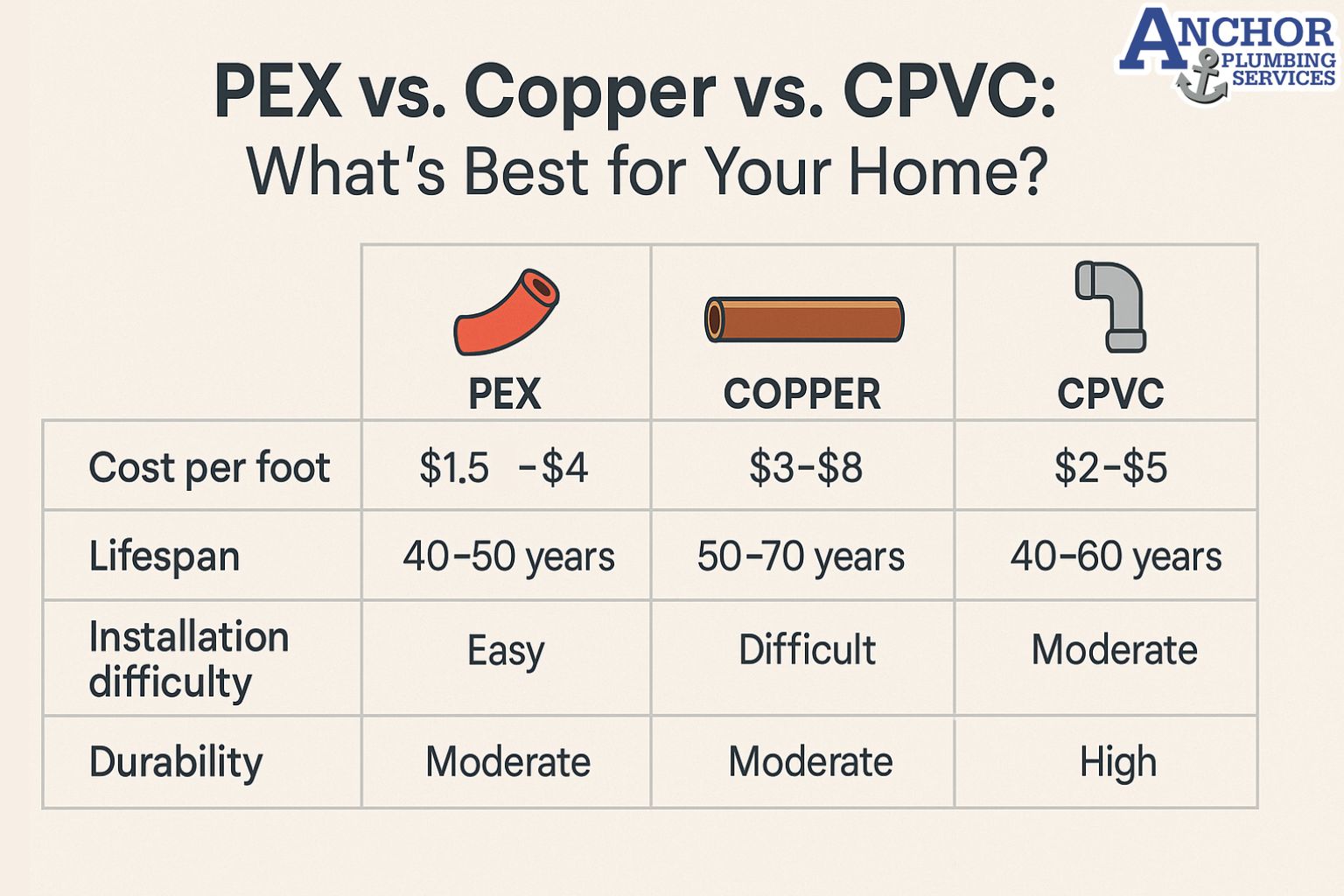
Choosing the right pipe material helps balance durability, performance, and cost. The best option depends on your home’s age, water quality, and local climate.
| Material | Durability | Temperature Tolerance | Installation Difficulty | Maintenance Needs |
| PEX | 40–50 years | Handles hot and cold water | Easy (flexible and quick to install) | Low – resists scale buildup |
| Copper | 50–70 years | Excellent – tolerates heat and pressure | Moderate to difficult | Low – naturally corrosion resistant |
| CPVC | 40–60 years | Moderate – can become brittle in extreme heat | Moderate | Moderate – may require replacements over time |
PEX is preferred for affordability and flexibility, making it ideal for modern home retrofits or slab foundations. Copper remains the most durable and time-tested option, valued for its longevity and natural corrosion resistance. CPVC offers a middle ground, but it’s more rigid and can degrade under high heat or direct sunlight.
When selecting a material, consider local water chemistry, water pressure, and budget. A licensed plumber can test your system and recommend which material ensures long-term reliability with minimal maintenance.
How to Get an Accurate Repipe Estimate
Request a detailed estimate that includes per-foot pricing, material selection, labor costs, and warranty terms. Accurate quotes depend on a full in-home inspection that evaluates your plumbing layout, accessibility, and pipe condition.
To prepare for the most precise estimate, homeowners should schedule a camera inspection or pressure test before requesting quotes. These diagnostic steps reveal hidden corrosion, leaks, or blockages that could impact labor time and total project cost.
A professional plumber’s estimate should clearly outline:
- Material choice (PEX, copper, or CPVC) and cost per linear foot.
- Labor rate and estimated project duration.
- Permits and inspections included in the total.
- Warranty coverage, typically 5–10 years for workmanship and up to 50 years for materials.
Accurate repipe quotes depend on transparency. Always compare estimates from multiple licensed contractors and ask for a written breakdown before approving work. This ensures you understand exactly what’s covered—and prevents hidden charges after the project begins.
Frequently Asked Questions About Repiping Costs
How much does it cost to repipe a 2,000-sq-ft home?
Between $6,000 and $12,000, depending on the pipe material, layout, and accessibility.
Is repiping worth it for older homes?
Yes. It improves water pressure, reliability, and property value while eliminating leaks and corrosion.
Does insurance cover repiping?
Usually not, unless damage occurs from a sudden and covered event such as a burst pipe.
How long do repiped systems last?
PEX and copper systems last 40–70 years with proper installation and maintenance.
Conclusion
Repiping a house is one of the most valuable long-term plumbing investments. The average project cost of $4,000 to $15,000 pays off through improved water pressure, leak prevention, and reduced repair expenses over time.
While the total price depends on material type, home size, and accessibility, the benefits extend far beyond immediate convenience. A new plumbing system increases efficiency, enhances water quality, and protects your home’s structure from water damage.
Professional repiping services ensure long-term reliability and peace of mind. Repiping may seem like a big investment, but it safeguards your home against corrosion and costly future leaks.
Anchor Plumbing Services provides licensed whole-home repiping with transparent pricing, premium materials, and workmanship warranties throughout San Antonio and surrounding areas. Our Master Plumber–led team delivers lasting solutions you can trust for years to come.
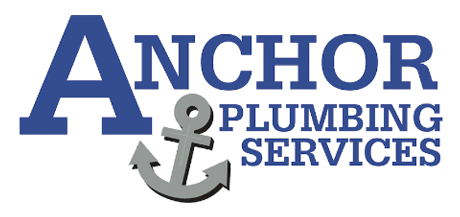

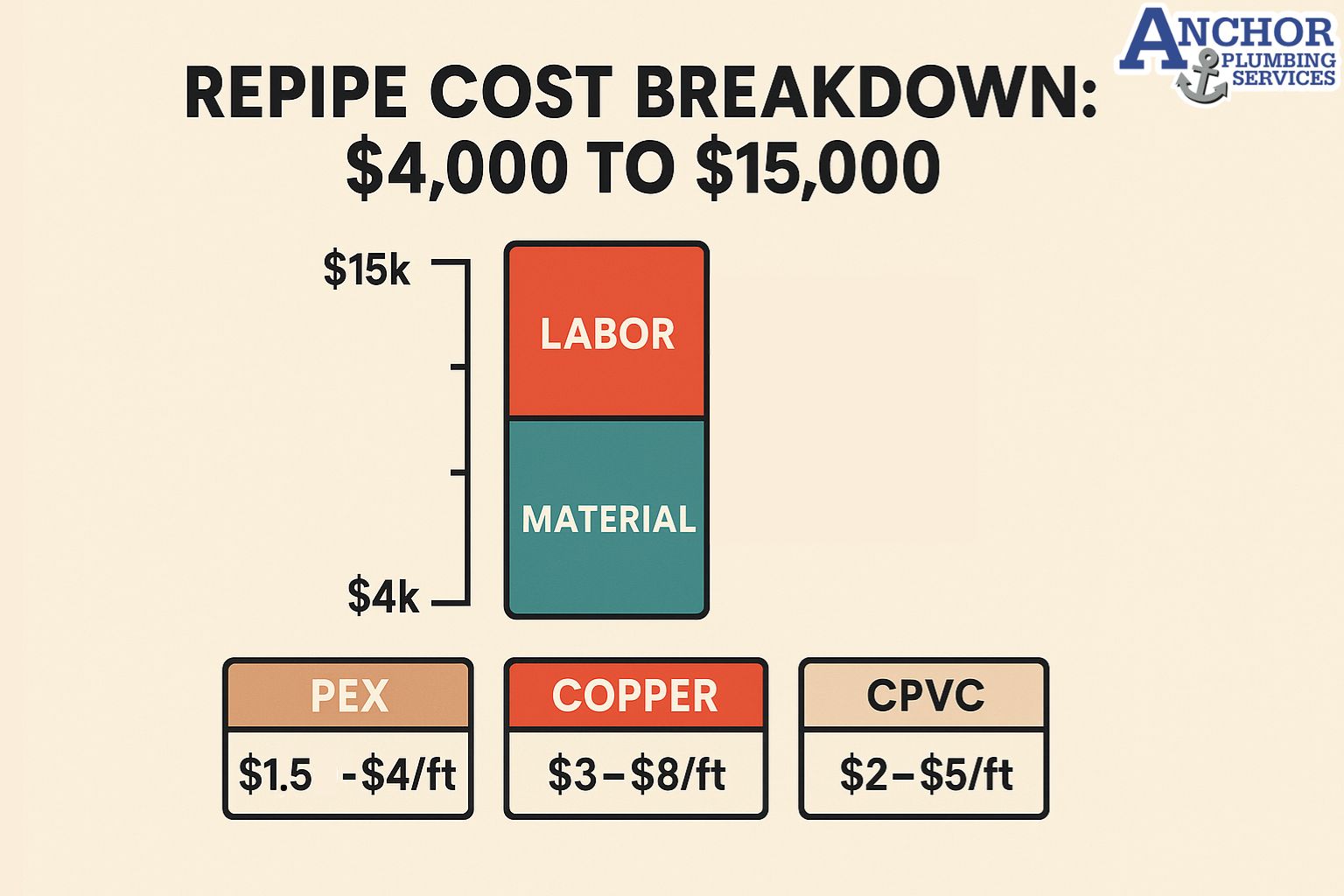
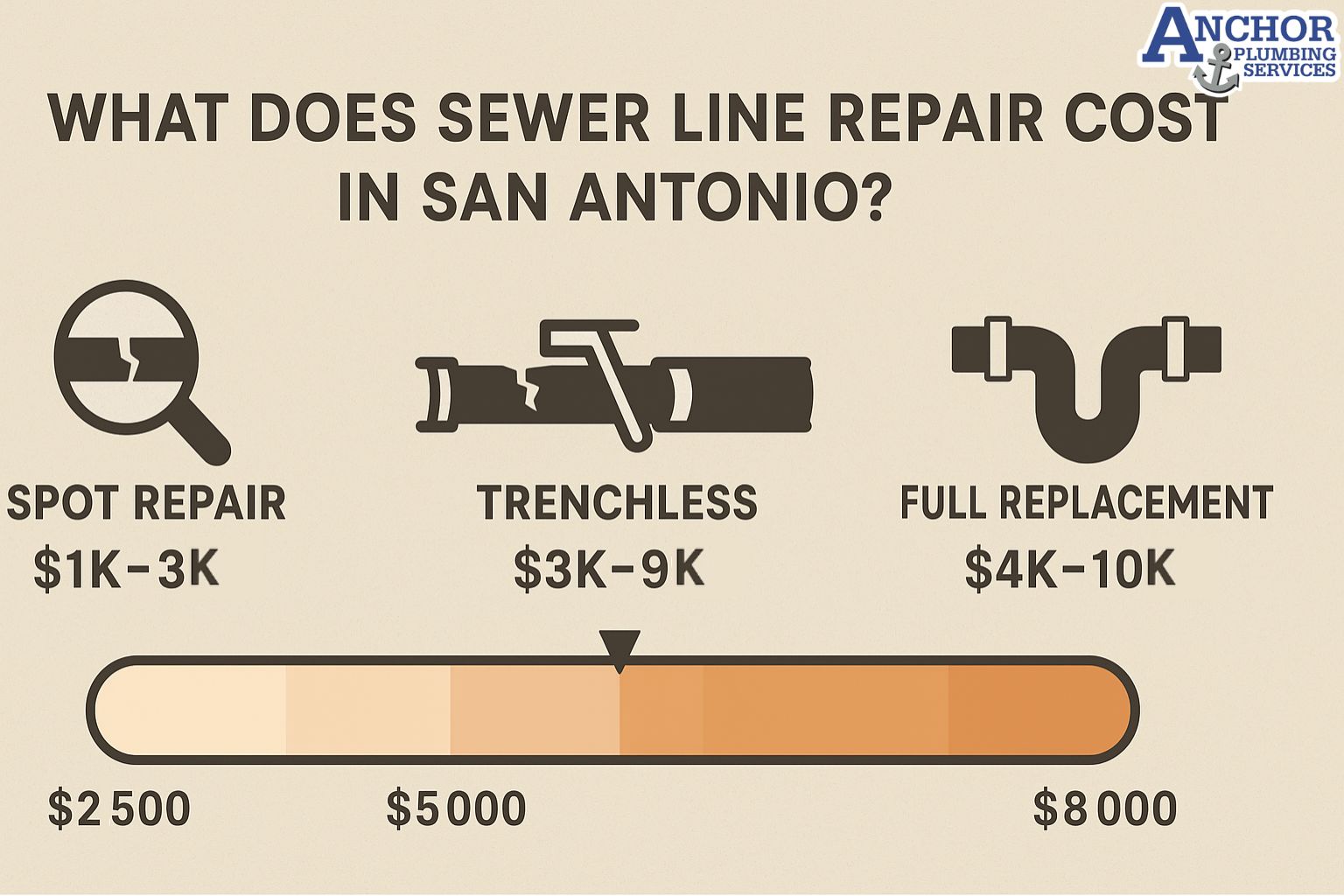
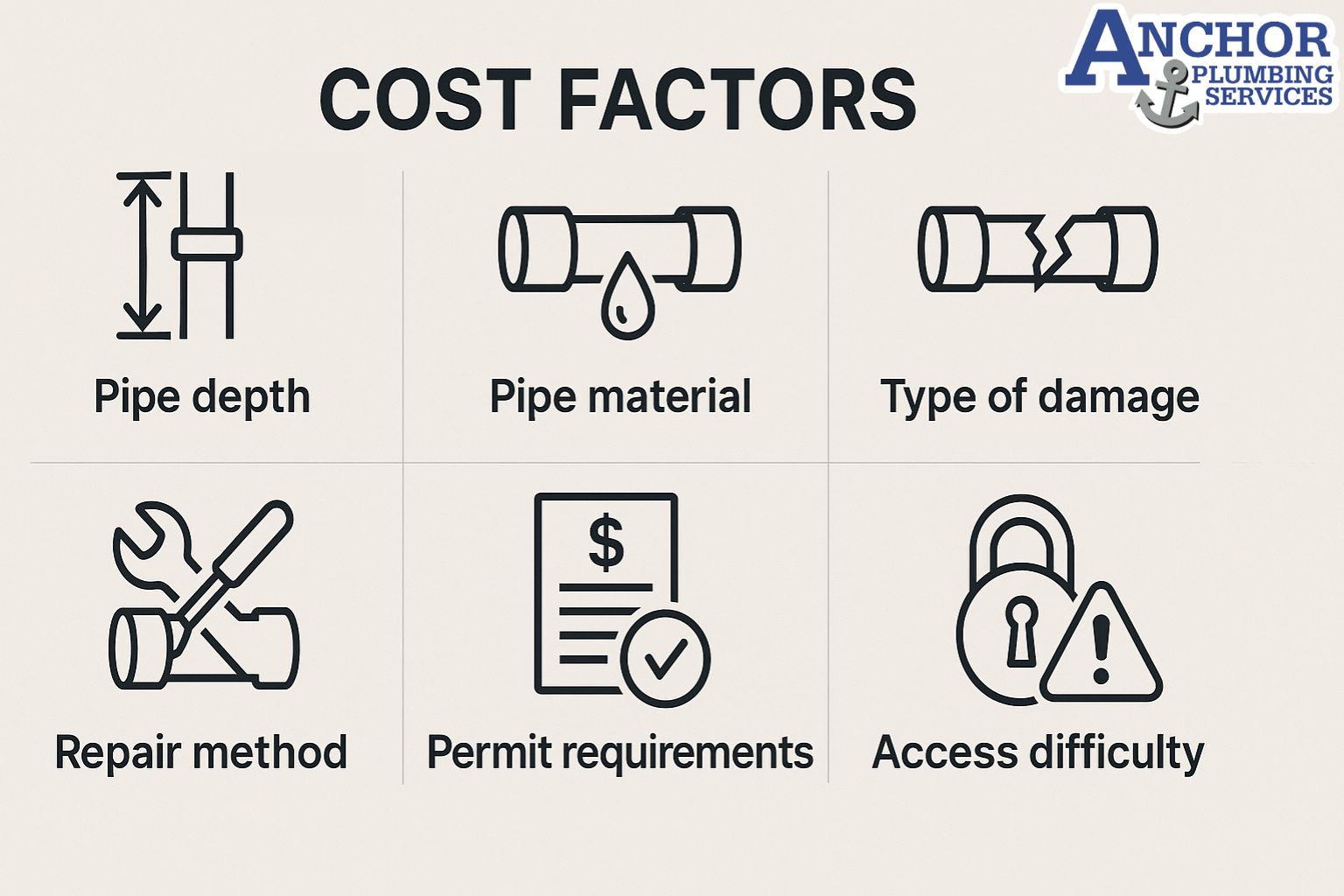
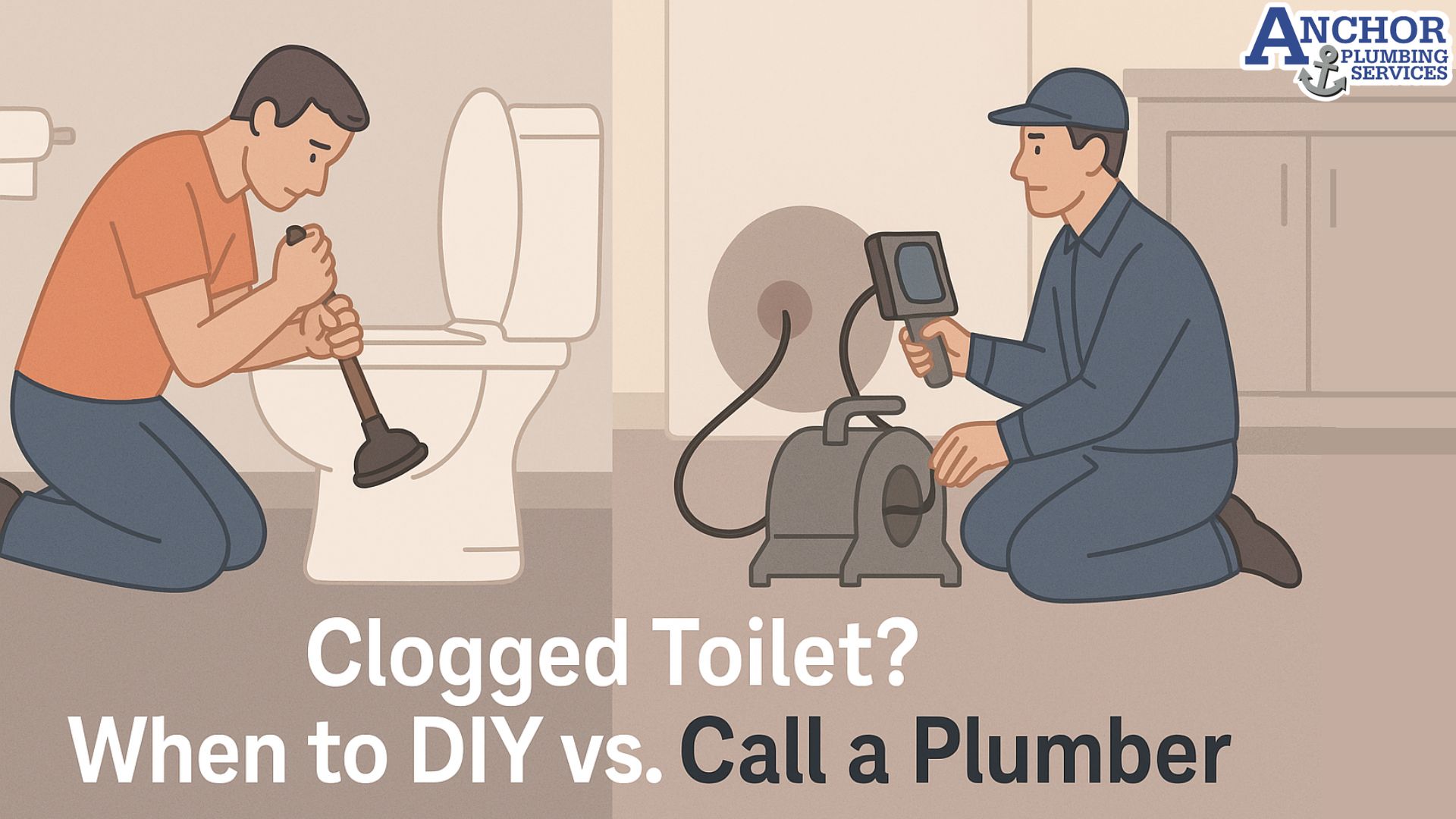
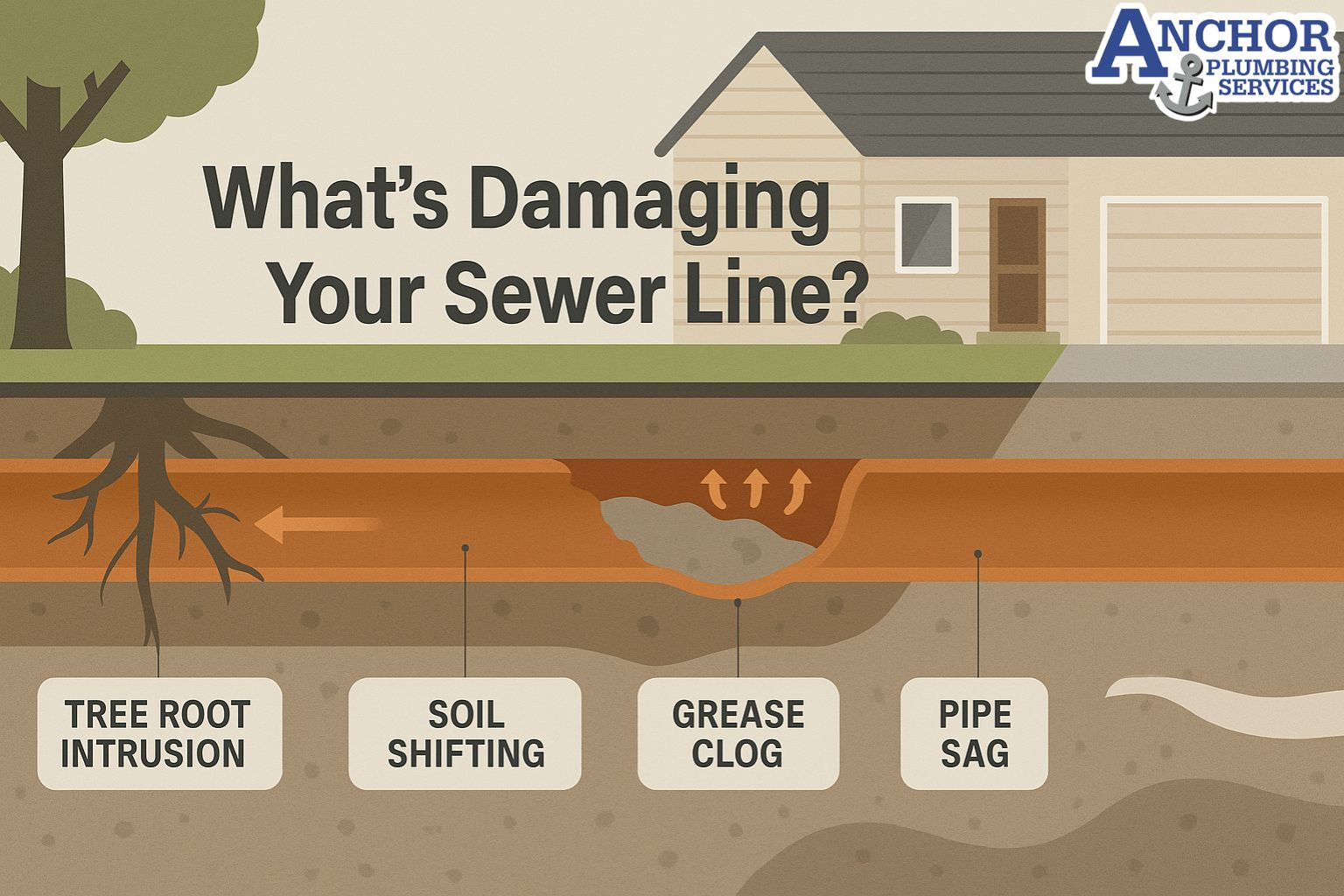
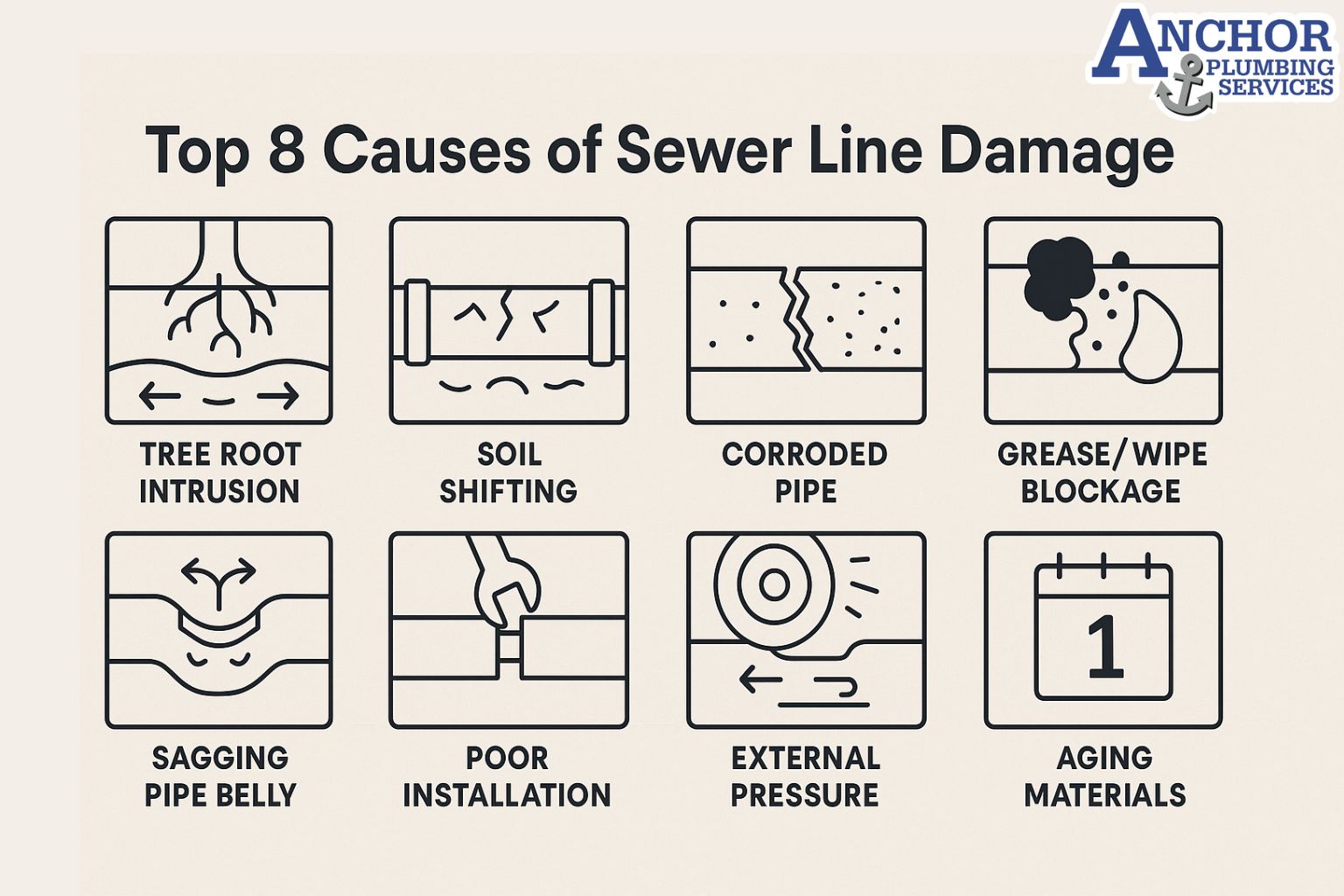
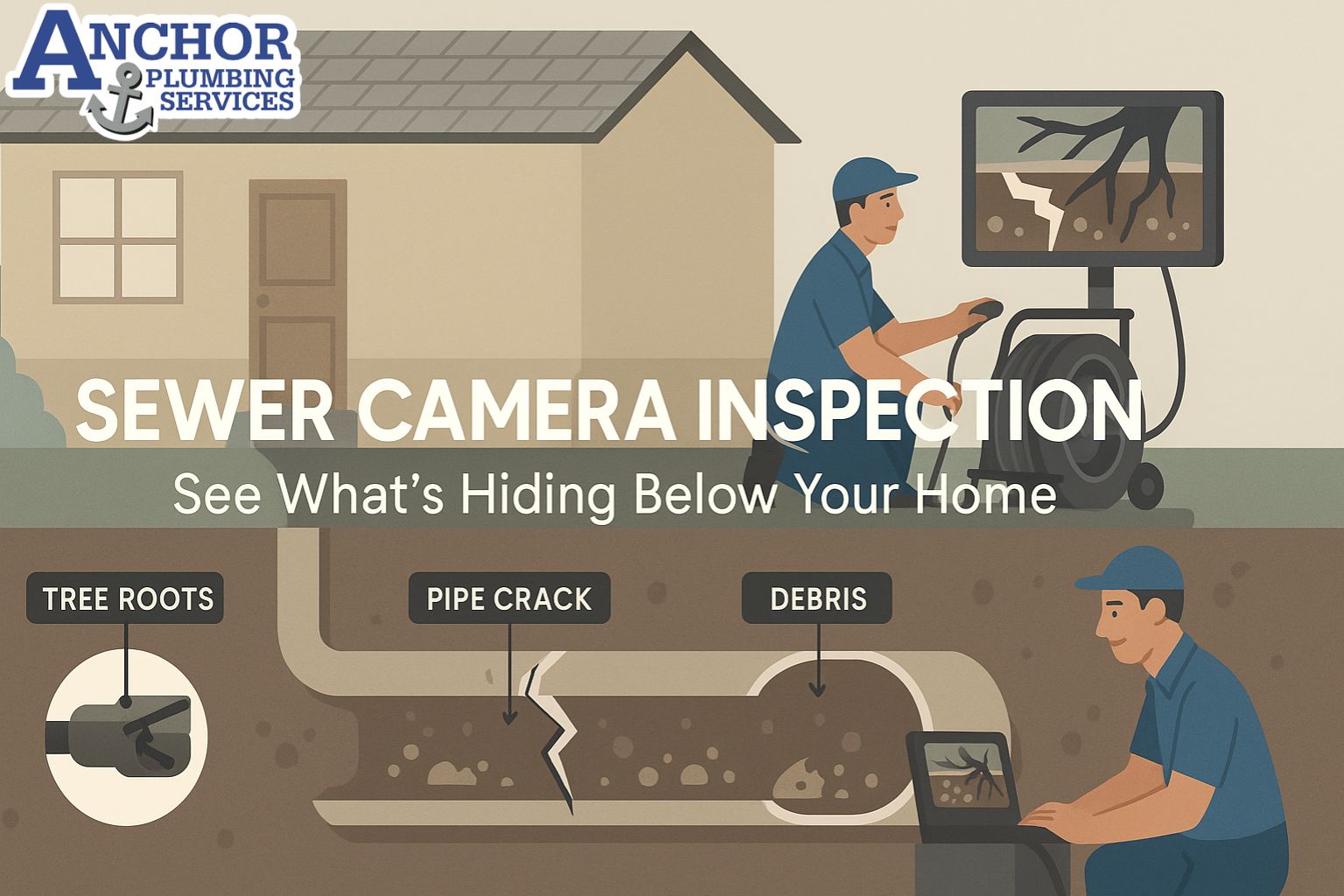
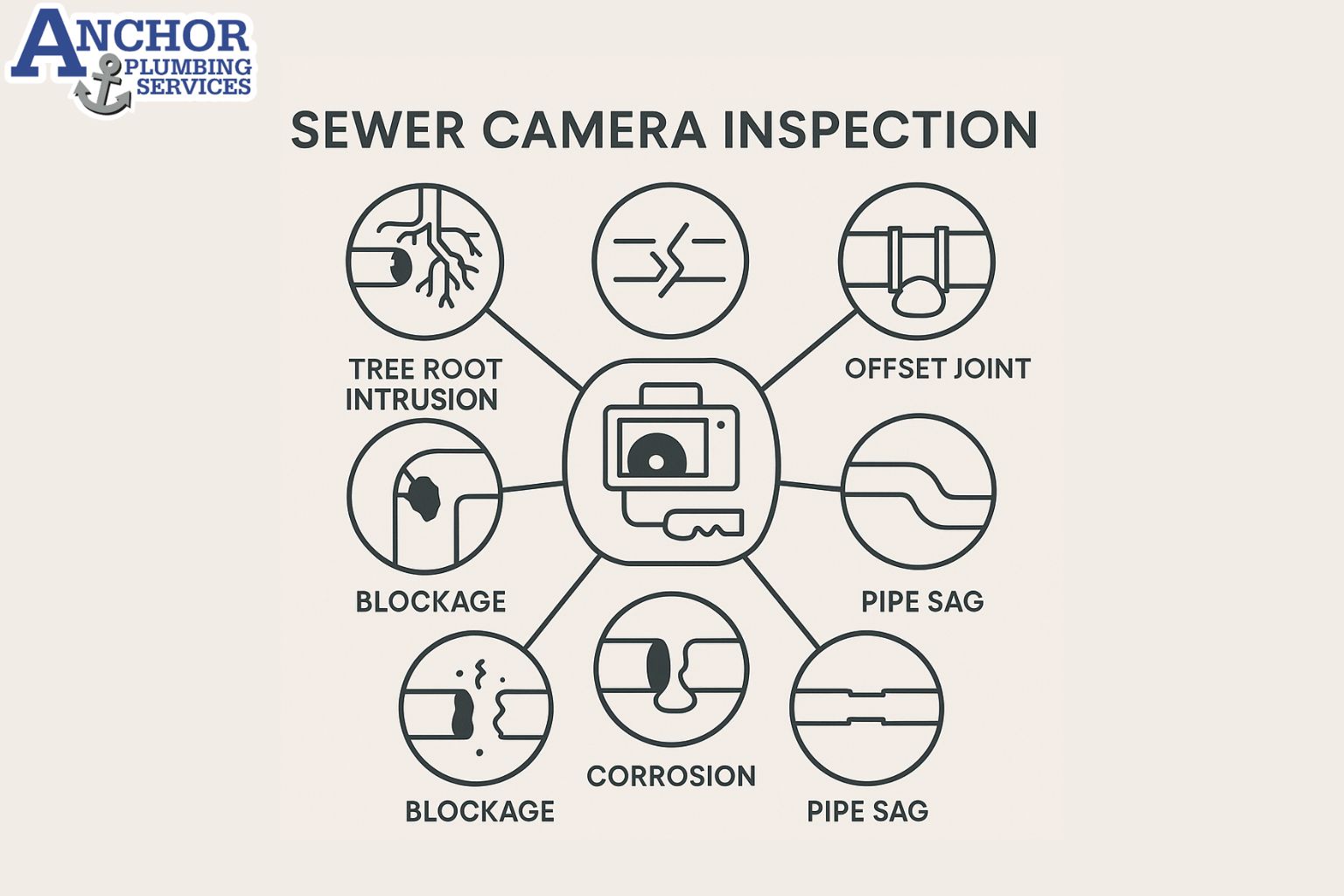
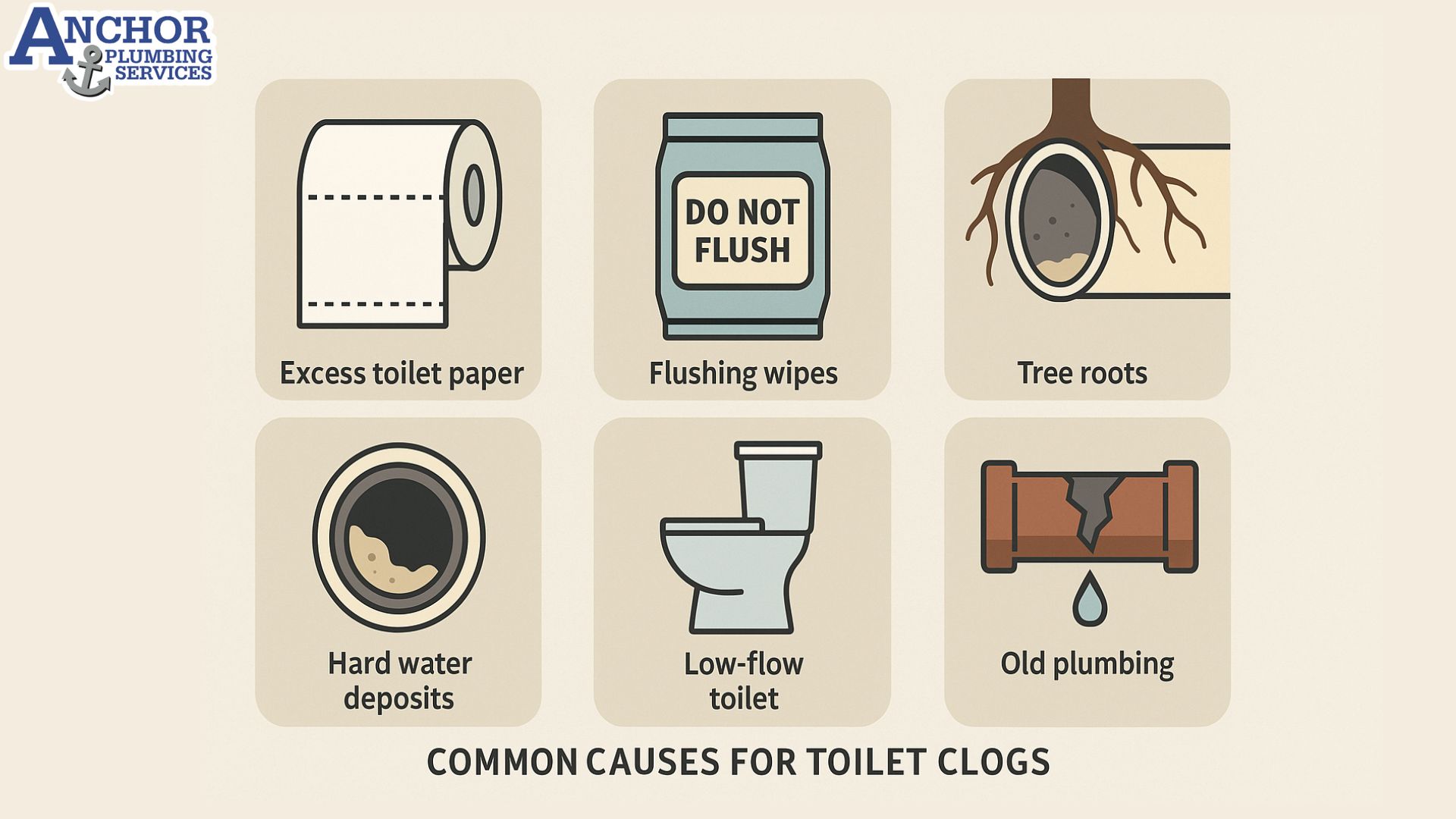
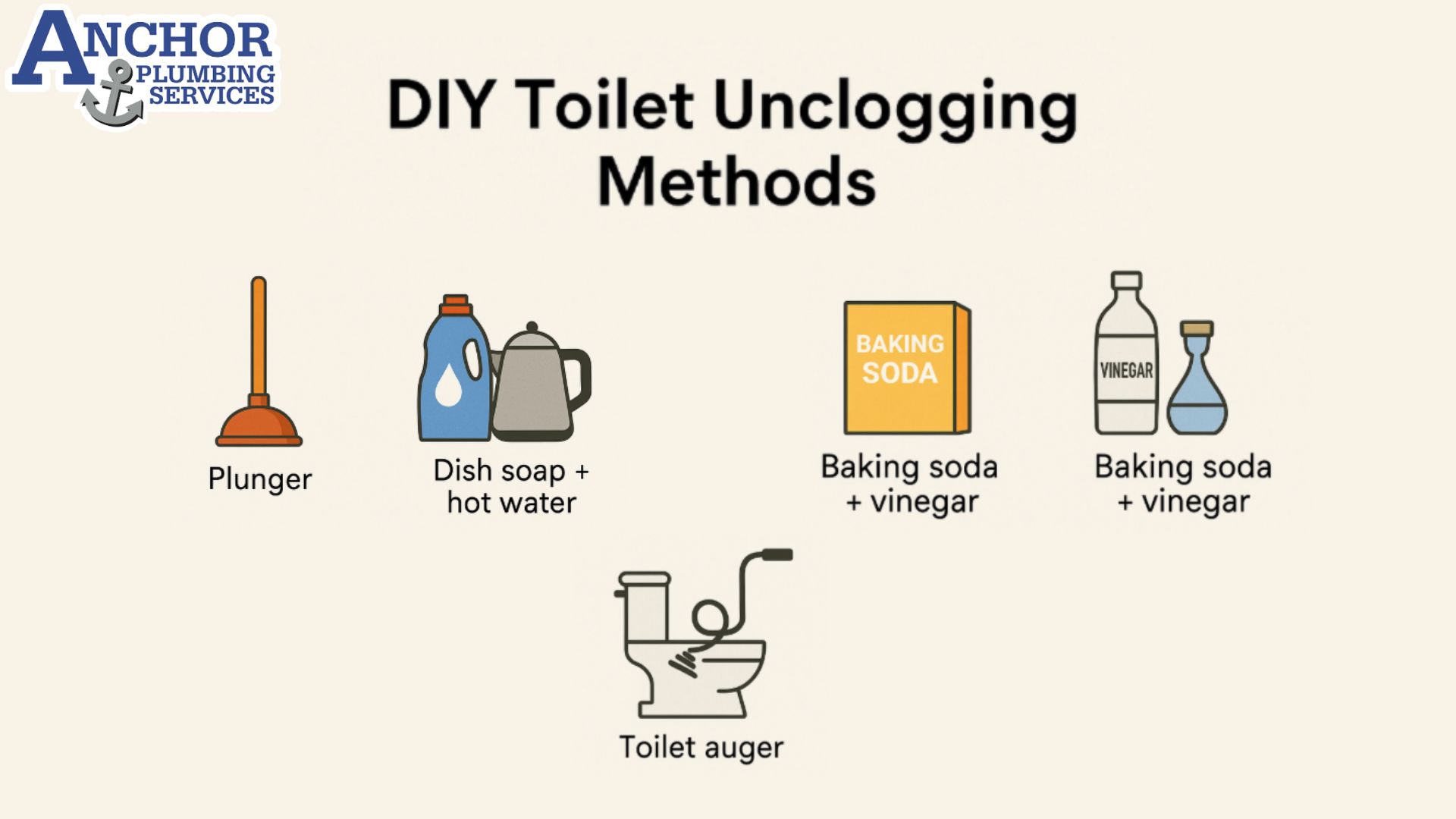

 Natural gas leaks can pose serious risks to your household’s health and safety. Here are some of the most common dangers associated with gas leaks inside the home:
Natural gas leaks can pose serious risks to your household’s health and safety. Here are some of the most common dangers associated with gas leaks inside the home:  There are numerous symptoms of gas leaks that homeowners should be aware of. The sooner property owners can identify gas pipe leaks, the faster they can schedule professional services to repair the leak and restore safety to their house.
There are numerous symptoms of gas leaks that homeowners should be aware of. The sooner property owners can identify gas pipe leaks, the faster they can schedule professional services to repair the leak and restore safety to their house.